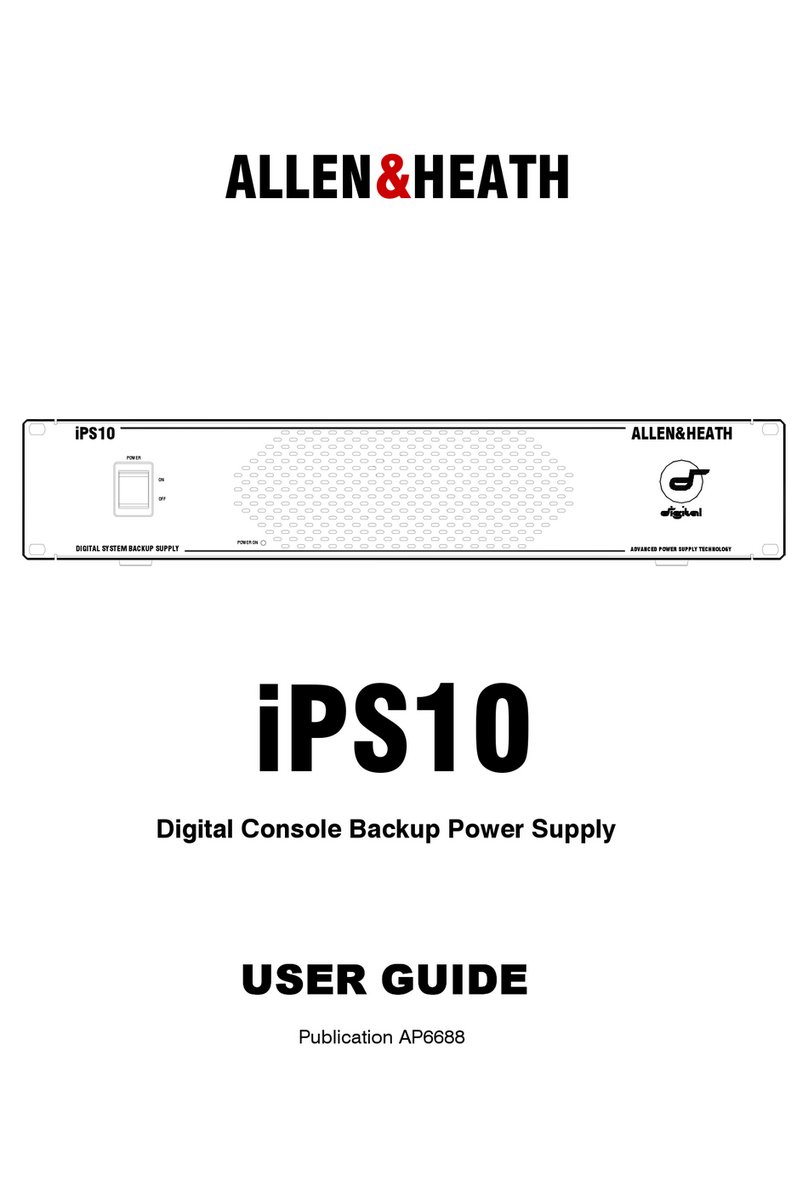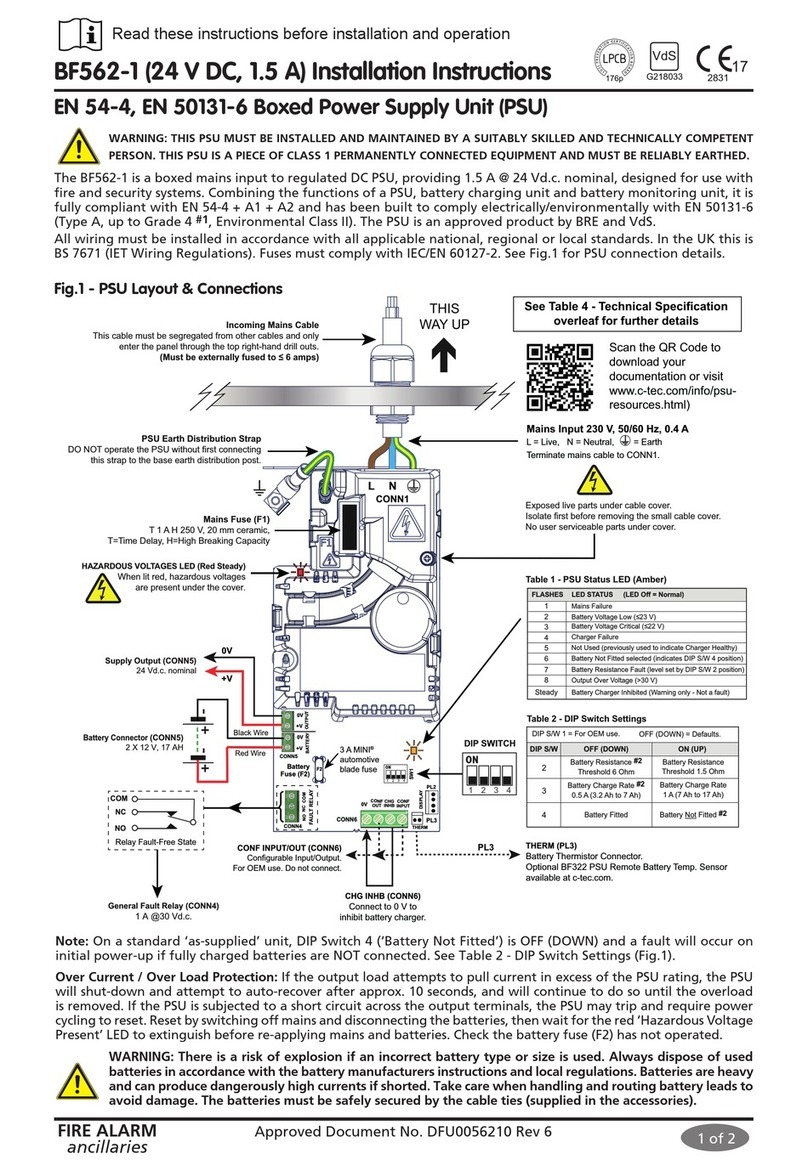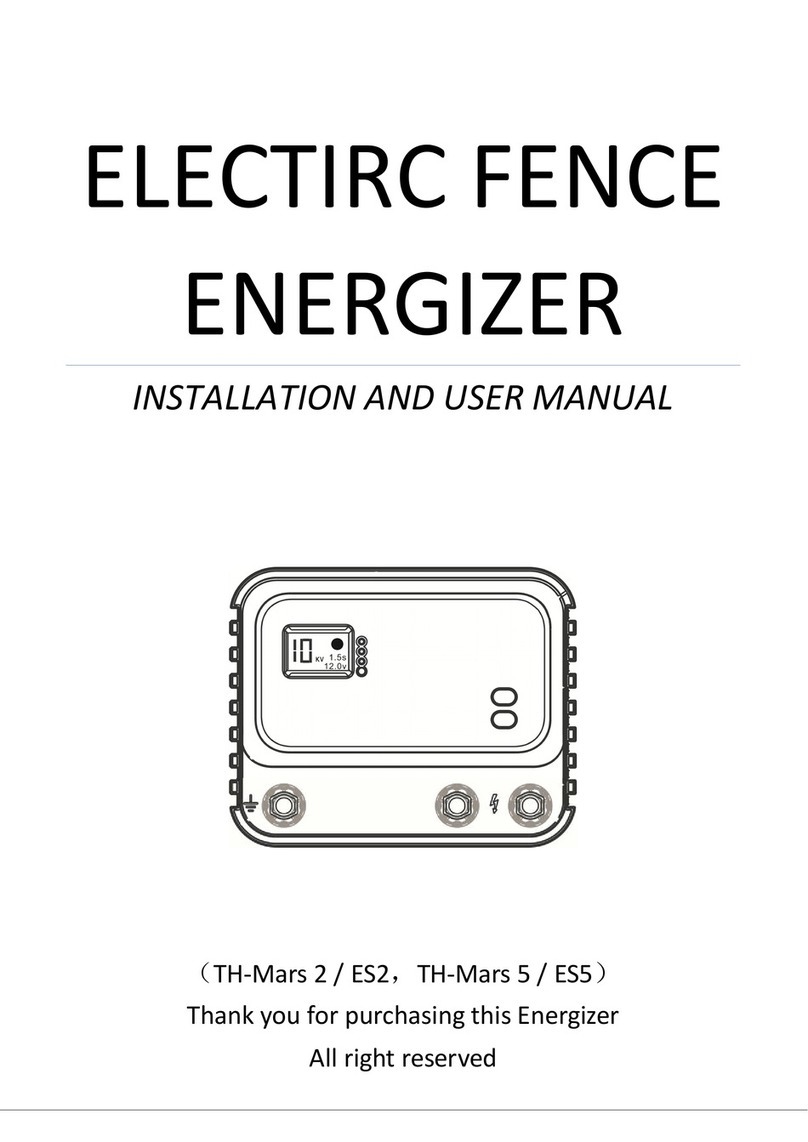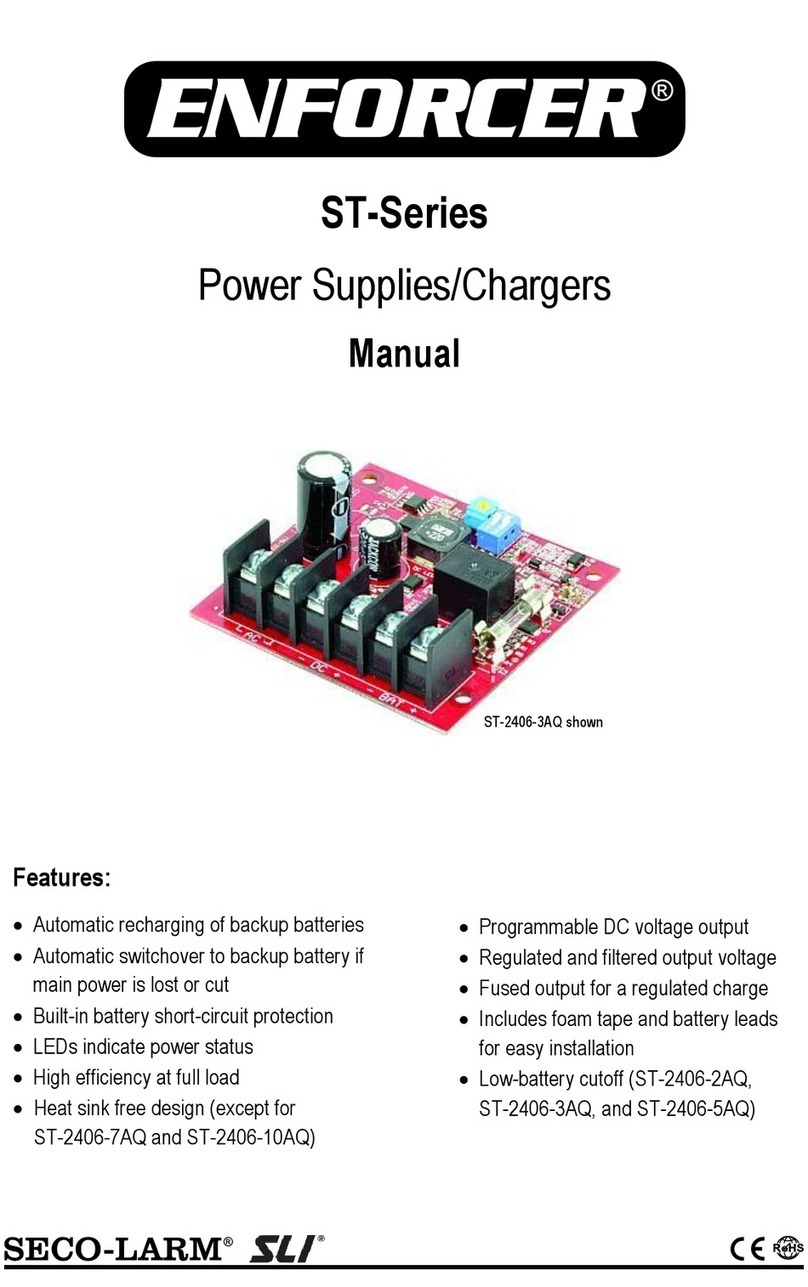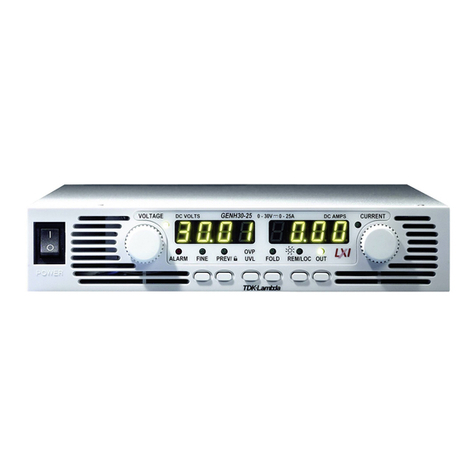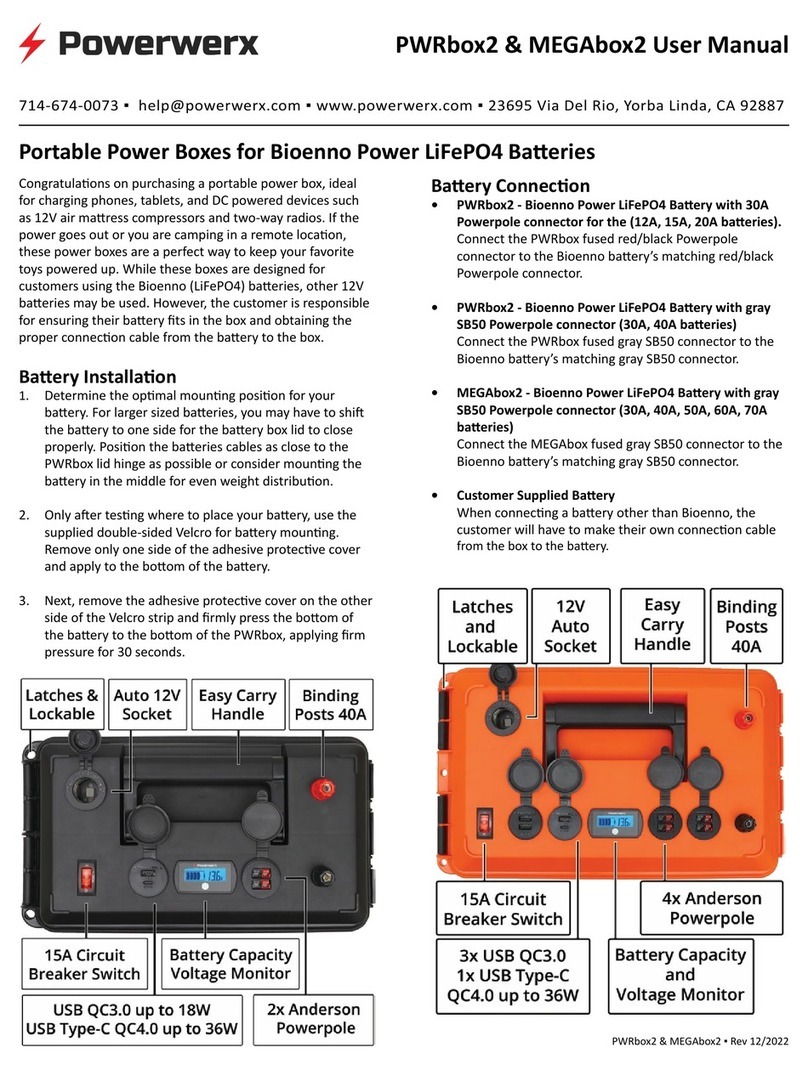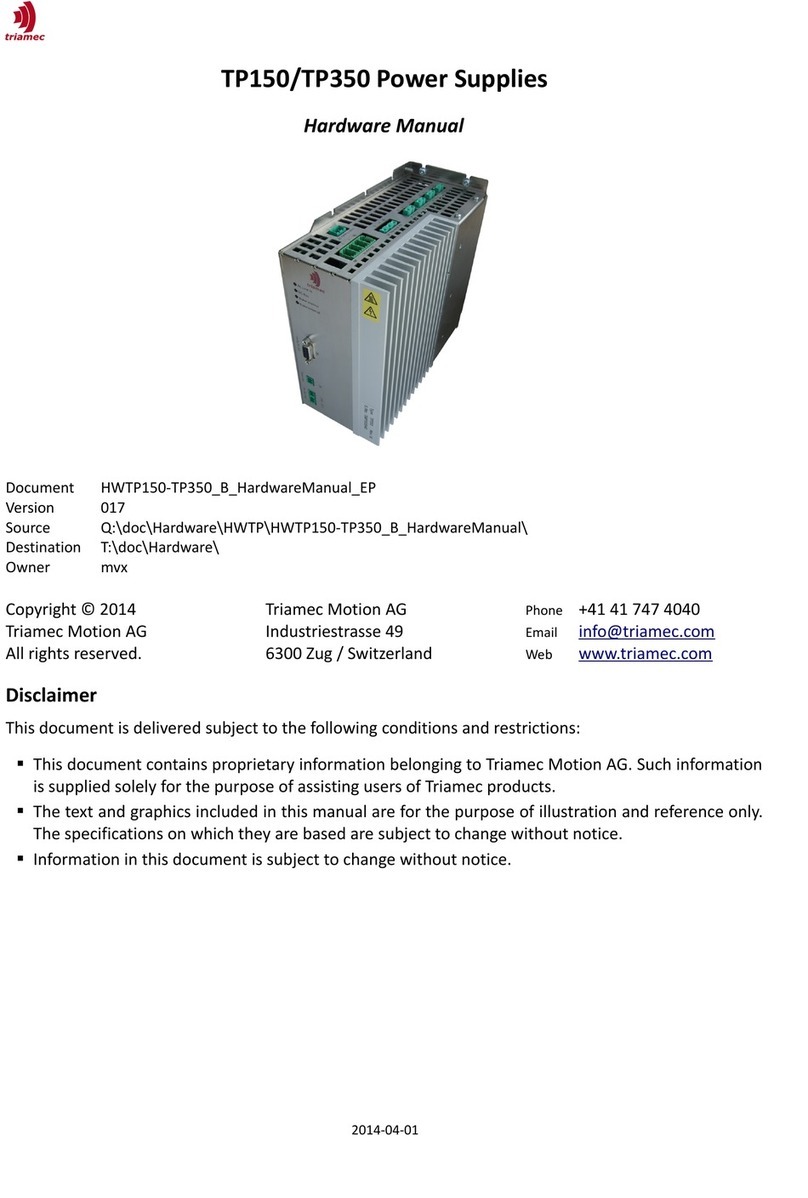Emcotec PowerCube HBS User manual


HBS Operating Instructions Version 1.0
Page 2 of 36

HBS Operating Instructions Version 1.0
Page 3 of 36
Contents
1. Preface .............................................................................................4
2. Safety Instructions..........................................................................5
3. What does HBS stand for?.............................................................6
4. HBS Connection Scheme...............................................................7
5. Characteristics ................................................................................8
5.1. Usage in an Electrical Motor Powered Model..........................8
5.2. Usage in a Combustion Engine Powered Model...................11
6. Recommended Accessories ........................................................ 15
7. Mounting........................................................................................16
8. Connecting the Supply Batteries.................................................16
9. Connecting the Receiver Battery.................................................17
10. External Status-LED....................................................................19
11. Mounting Examples ....................................................................19
11.1. Electrical Powered Model....................................................20
11.2. Electrical Powered Model with Dual Supply ........................20
11.3. Combustion Engine Powered Model ...................................21
11.4. Combustion Engine Powered Model with Dual Supply........22
12. Operating .....................................................................................23
13. Storage-Mode ..............................................................................25
14. Summarizing the HBS-Functions ..............................................27
15. LED-Codes (Error- and Status Indications)..............................28
15.1. Ext. LED at "Status Output".................................................29
15.2. Internal LED "Status"...........................................................30
15.3. Summary Table ...................................................................30
16. HBS Block Diagram ....................................................................32
17. Technical Data of the HBS .........................................................33
18. Warranty.......................................................................................35
19. Declaration of Conformity..........................................................36
20. Disposal of Equipment ...............................................................36
21. Legal Instructions .......................................................................36

HBS Operating Instructions Version 1.0
Page 4 of 36
1. Preface
With this PowerCube ® HBS (Hybrid Battery Supply) you purchased
a high grade, modern and secure power supply system. We appreciate
your trust and assure you that you made the right choice!
More than 25 years of experience in development and manufacturing
of electronically systems, knowledge of the world’s best model airplane
pilots as well as the experience in UAV's has influenced the
development of EMCOTEC products. All products are manufactured at
EMCOTEC GmbH in Germany on our own production line. Extensive
optically and electronically end tests for every system, which leaves
our house, assure that you, our customer acquire an absolute reliable
product, which considerably increases the reliability of your valuable
RC-Model.
Of course, the products not only have been tested extensively in the
laboratory, but also went through intensive flight-testing. Like done in
the automobile industry an FMEA (Failure Mode and Effect Analysis)
reduce the possibility of damage and malfunction on operating errors to
a minimum.
We kindly ask you to read these operating instructions carefully and to
observe the installation hints. Thus, errors can be avoided in advance.
We are all ears for your wishes and questions. Challenge us!
Wehringen, May 2013
The Staff of EMCOTEC GmbH

HBS Operating Instructions Version 1.0
Page 5 of 36
2. Safety Instructions
In general, all connecting lines should be run so that they do not
come into contact with moving or hot parts of the model (such as
servos, gears or mufflers).
The HBS (20V…75V) can be driven by high voltages but must be
according to IEC 60449 rules. This partial range of low voltage is
generally known as low tension current or light current. The limits
for direct current (DC) are ≤120 V. These values correspond to
continuously permissible effective touch voltages for adults and
are considered not life-threatening under normal circumstances.
For voltages greater than 60 volts DC all current leading cables
should be isolated and protected against touching.
The HBS must be protected from humidity and moisture.
The HBS must have sufficient distance to neighboring areas, in
order to allow for good heat dissipation.
Improper handling of the HBS can result in serious damage/injury
to property or persons!
Carry out a general inspection of all connections in your model
before each use! All plugs must be correctly polarized and have
clean contacts (i.e. fit tightly). Loose cables present a potential
hazard!
Under no circumstances may power sources be used that do not
meet the specified voltages.
The current-conducting contacts of the connector plugs may not
be short-circuited. If you fail to observe this warning, the short-
circuited cables may overheat and even melt.
The HBS may not be taken apart or technically altered under any
circumstances.
Never use the HBS for purposes other than for RC model making
as a hobby. Above all, their use in passenger-carrying equipment
is strictly prohibited.
Operate the HBS only with components provided for model
making (or UAS).

HBS Operating Instructions Version 1.0
Page 6 of 36
Always ensure that you have fully charged batteries when
operating your model. Empty batteries inevitably lead to failure of
the RC components, which cause the model to crash.
Do not expose the HBS to any extremely hot or extremely cold
temperatures, moisture or humidity. This would lead to danger of
malfunction, damage or decreased efficiency.
Only use accessories approved by EMCOTEC with the HBS.
3. What does HBS stand for?
HBS stands for Hybrid Battery Supply. Hybrid means "bundled,
interbred or mixed". In this case, it relates to the voltage supply of the
receiver equipment or other components in a RC model or UAS
(Unmanned Aerial System).
The supply voltage of the HBS is generated by the flight battery of an
electrical powered model or another power source (e.g. generator). It is
actually a kind of BEC (Battery Elimination Circuit). Additionally, this
supply voltage is "interlaced" with a regular 2-cell Lithium-Polymer
battery. This additional battery serves as a buffer; it provides for high
current peaks and makes sure, that there is enough energy in case the
flight battery is empty or breaks.
Of course, the usage of the HBS is not limited to electrically powered
models. Stay tuned for more later on.

HBS Operating Instructions Version 1.0
Page 7 of 36
4. HBS Connection Scheme
Rear:
Hint:
The HBS can get very hot depending on withdrawn power. Therefore, the total
aluminum housing is used as heat sink.

HBS Operating Instructions Version 1.0
Page 8 of 36
5. Characteristics
The HBS is available in two versions mend for different usages. Both
systems differ only in their input voltage range.
Version 1: HBS with 10V … 36V input voltage
•Intelligent energy management system for combustion
powered models.
•Entire BEC substitute for electrical flight applications in
connection with a 2S LiPo buffer battery
Version 2: HBS with 20V … 75V input voltage
•Entire BEC substitute for electrical flight applications in
connection with a 2S LiPo buffer battery
Hint:
The HBS is a totally new system and therefore remains under legal protection of
registered designs at the German patent office (Nr. 20 2013 000 114.2)
First, the function for electrical flight (BEC substitute) will be shown for
better appreciation as follows.
5.1. Usage in an Electrical Motor Powered Model
Charging of all batteries in an electrical powered model
Background of the development of the HBS is the necessity to
additionally charge the receiver battery in electrical powered models. In
huge models with redundant supply (battery switching operation) even
two receiver batteries must be charged in order to charge all batteries.
This causes a lot of work and thoughtfulness.

HBS Operating Instructions Version 1.0
Page 9 of 36
Right here the HBS adds to it: It disburdens the pilot's everyday life
remarkably and makes sure there are less or even no errors during
charging of the batteries.
BEC was yesterday – HBS is today
The reason for the PowerCube ® HBS is to supply the receiver
equipment out of the flight battery similar to a BEC. Additionally, a
small receiver battery when mounted inside the model which actually
serves as buffer provides for high current peaks and serves for
reliability in case the flight battery is empty or malfunctions.
The receiver set is actually supplied by the HBS while the receiver
battery (2S Lithium-Polymer battery) serves for safety and is recharged
by the HBS at the same time. Manual charging of the receiver battery
is eliminated, as well as cell matching, which is done by the HBS, too.
The flight battery supplies the HBS. The DC/DC converter in the HBS
reduces the voltage of the flight battery to the charging voltage of the
2-cell LiPo battery which is directly connected to the balancing
connector of the HBS.
As soon as the flight battery is connected the HBS starts charging the
receiver battery – fully automatically. Charging current is 1.4 amps.
Simultaneously to charging, both cells of the receiver battery are
matched (equalizing function).
The receiver set gets its current via the receiver battery (when using a
battery switch via two receiver batteries with a HBS each) additionally
from the HBS (=> hybrid solution). Due to the HBS, the receiver
battery can be very small which practically leads to a weight neutral
solution. A 450mAh to 800mAh battery fully suffices – for huge models
2 batteries when using dual current supply operation.

HBS Operating Instructions Version 1.0
Page 10 of 36
The HBS constantly recharges the receiver battery, thus, the receiver
battery is rarely discharged. Only when the flight battery fails, the
receiver set is supplied by the receiver battery only.
Hint:
As long as the average of the withdrawn current is lower than 1.4 amps (average
current consumption of the receiver set) the system acts as an "unlimited" big
receiver battery. The disadvantages of separate charging and balancing of the
(receiver) battery are eliminated.
The charging end voltage is 8.2 volts instead of normally 8.4 volts. This
reduces the usable capacity slightly but increases life expectancy
(charging cycles) significantly – similar to the batteries in a hybrid
vehicle. Here too, the bandwidth of the battery is not fully utilized in
order to increase life duration.
Extremely high Currents
The difference to a regular BEC without receiver battery is that, due to
the usage of a 2S Lipo battery, high current peaks are possible which a
BEC can not deliver. An 800mAh / 30C LiPo battery delivers 24 amps
continuous current. No BEC can do that! Additionally, the circuitries of
the flight battery and the receiver set are totally electrically separated
by the HBS. The advantages of motor controllers with optically isolated
couplers fully remain. The biggest advantage of the HBS compared to
a BEC is, that the receiver set works totally normal should the flight
battery fail because it is then supplied by the receiver battery.
The HBS is available in two versions which differ in their input voltage
range. Both versions apply to electrical flight; the version with the
smaller input voltage range applies for applications without electrical
drive as well.

HBS Operating Instructions Version 1.0
Page 11 of 36
5.2. Usage in a Combustion Engine Powered Model
The HBS also works perfectly for motor models and jets – but is used
differently than in electrically powered models.
In a combustion engine powered model the HBS does not work as
hybrid supply but rather as a charger / equalizer which is constantly
mounted into the model. Charging of the receiver battery (or ignition /
turbine battery) is conducted by connecting an external voltage in the
range of 10 volts up to 36 volts (e.g. car battery, truck battery, solar
panel, 4S – 8S Li++ battery or any other voltage supply).
Integrated charging station in combustion engine powered model
Due to the circuitry design of the HBS a fully electrically isolation
(galvanic separation) of the input voltage (Input) and the output voltage
(Output) is accomplished.
Hint:
The output voltage (Output) of the HBS is galvanic separated from the input
voltage (Input) (electrically isolated).
Fully automatically charging several batteries with one single connector
In a model with e.g. three LiPo batteries (two for the receiver set and
one battery for ignition or turbine) three HBS are to be built in (one
HBS for each battery). All Inputs (Input) of the HBS' are connected
together and put onto one single charging connector (e.g. EMCOTEC
Part No. PC4205).
Now one single car battery suffices to be connected and all three
batteries are charged simultaneously and automatically!

HBS Operating Instructions Version 1.0
Page 12 of 36
Because no charging program, no cell number and no charging current
must be selected and no balancer must be connected, charging is
simple as never before and can be conducted practically after every
flight. Simply connect a car battery after landing the model – ready.
Due to recharging after every flight, batteries can be much smaller as
usual. This leads to a weight neutral solution because the additional
weight of the HBS is compensated by the smaller batteries.
Battery State Indication
The charging state of the (receiver) battery which is connected to the
HBS is displayed by five LED's, operating state by 2 additional LED's.
In order to assess the remaining capacity of the battery pressing the
built in button of the HBS suffices. The charging state is displayed by
the LED's before the device automatically turns off after one minute. It
is possible to connect an external LED e.g. in the fuselage's sidewall. It
is an additional advantage of the HBS that the receiver battery can be
connected unlimited times because there is no current consumption
(without flight battery or any other input voltage)!

HBS Operating Instructions Version 1.0
Page 13 of 36
Storage-Function
A so called storage function rounds up the performance of the HBS. If
the (receiver) battery is to be unused for a longer period of time (e.g.
winter pause) a 5 second push onto the button activates the storage
mode. Both LiPo cells of the receiver battery are then discharged to
their optimal voltage which is best for storage, fully automatically. Due
to this function, the life performance of the battery is increased
tremendously.
Cooperation with DLR
The HBS (Hybrid Battery Supply) was developed in close cooperation
with the DLR (Deutsches Luft- und Raumfahrtzentrum / German Air
and Space Center) and finds its usage in unmanned flight systems
(UAS).
Highest Safety
Due to elaborate FMEA (Failure Mode and Effect Analysis) all risks
when using Lithium-Polymer batteries could be minimized or
eliminated. The combination of the HBS with the PowerCube LiPo
batteries (Part No. PC4100 up to PC4120) therefore is absolutely safe
and long living.

HBS Operating Instructions Version 1.0
Page 14 of 36
PowerCube batteries must not be removed from the model for
recharge and can remain built in. Just some other outstanding safety
features of the HBS are over-load protection, low-discharge protection,
equalizing, reverse polarity protection, shortcut protection, over
temperature cutoff and recognition of battery errors. The Hybrid Battery
Supply makes charging technique in a RC model as safe as never
before.
The HBS in head words
Wide input voltage range from 10-36 volts or 20-75 volts
Galvanic isolated charging system for 2S Lithium-Polymer
batteries
1.4A charging current, 8.20V charging end voltage
Integrated equalizer with storage function
Quiescent current lower than 1.5µA – Therefore no discharge of the
batteries during longer breaks
Unlimited number of parallel HBS possible. The outputs are
electrically isolated
Shortcut- and reverse polarity protected input
Shortcut protected output
Conservative Trickle-Charging for deep discharged batteries
Over-temperature cutoff
Different display modes of the charging- and battery state
Recognition and indication if battery errors
Simple control of charging state of the receiver battery with single
button press
Special ground concept for disturbance free operation and highest
safety
High grade housing milled out of a solid aluminum block which also
serves as heat sink at the same time
Perfectly suitable in combination with PowerCube LiPo batteries
Under legal protection of registered designs (German Patent Office
Nr. 20 2013 000 114.2)

HBS Operating Instructions Version 1.0
Page 15 of 36
6. Recommended Accessories
Part No. Product
PC4100 PowerCube 450 – 2S LiPo battery, 450mAh
PC4105 PowerCube 800 – 2S LiPo battery, 800mAh
PC4110 PowerCube 1300 – 2S LiPo battery, 1300mAh
PC4115 PowerCube 1800 – 2S LiPo battery, 1800mAh
PC4120 PowerCube 2400 – 2S LiPo battery, 2400mAh
PC4230 JR/UNI battery patch cable - Variant 30cm long
PC4230 JR/UNI battery patch cable - Variant 50cm long
PC4240 PowerCube battery charging / balancing cable - Variant 10cm
PC4240 PowerCube battery charging / balancing cable - Variant 20cm
PC4200 EMCOTEC Charging Socket
PC4205 EMCOTEC Charging Socket with Status LED's
PC4220 Charging Cable for Charging Socket - Variant 180cm
PC4220 Charging Cable for Charging Socket - Variant 250cm
PC4010 PowerCube HBS Status-LED, 5mm
A86200 Vibration Damper Set (4 pieces) - Variant “A”

HBS Operating Instructions Version 1.0
Page 16 of 36
7. Mounting
The HBS can be mounted onto a board using M3 screws. We
recommend mounting on vibration dampers (Part No. A86200). That
assures for good air flow and vibration damping.
8. Connecting the Supply Batteries
For connection of the supply voltage (= external charging voltage) on
the HBS a normal JR/Uni battery patch cable or a servo cable with
disconnected pulse line suffices. The wire cross section for low input
voltages should be up to 20 volts 0.5mm² (AWG21), for higher voltages
a cable with 0.25mm² (AWG24) suffices. The input of the HBS is
reverse polarity- and shortcut protected.
Hint:
A JR/Uni battery connection cable could be accidentally connected to the HBS
output because the spacing is nearly identical. This could lead to damage of the
HBS! Therefore always observe correct connection of the cable!

HBS Operating Instructions Version 1.0
Page 17 of 36
9. Connecting the Receiver Battery
All 2S Lithium-Polymer batteries are suitable as (receiver)-batteries for
charging. We recommend using PowerCube LiPo batteries. These are
equipped with today's highest grade available cells from KOKAM. This
assures for very long life performance. The capacity indication of the
HBS is calibrated to PowerCube LiPo batteries and shows the most
precise results for them.
Supply voltage 2S LiPo battery
(external charging voltage) (receiver battery)
The battery is connected to the output of the HBS with its balancing
connector (JST EHR connection system). Charging current of the HBS
is limited to 1.4 amps, charging end voltage is 8.2 volts.

HBS Operating Instructions Version 1.0
Page 18 of 36
Hint:
The charging end voltage of the HBS is 8.2 volts (although 8.4 volts are
permissible). This lowers the provided capacity of the battery by approx. 18%.
An 800mAh battery therefore has only effectively approx. 650mAh of capacity, a
battery with nominal 2400mAh just under 2Ah effective capacity.
These measuring results correspond to PowerCube batteries with KOKAM cells
at 23°C and 1C charging / discharging current.
Life performance of the batteries is tremendously increased by this lowered
charging end voltage because relevant values of the DOD (Depth of Discharge)
for life performance are far not reached.
Hint:
Only 2-cell Lithium-Polymer batteries must be connected to the HBS. Usage of
LiFePO4 batteries is impossible and not permissible!
Hint:
A receiver battery connected to the HBS is not protected against deep discharge!
Because the battery is directly connected to the consumer (e.g. battery switch or
receiver set) the HBS has no control. But a threatening low voltage is optically
indicated by LED's if the HBS is turned on.

HBS Operating Instructions Version 1.0
Page 19 of 36
10. External Status-LED
If free sight to the HBS in the model is not possible, an external LED
(Part No. PC4010) can be connected to the output ("Status Output").
The LED can be mounted into the fuselage's sidewall and indicate
important system states of the HBS optically. The open collector output
of "Status Output" switches 5 volts and can be loaded with a maximum
of 60mA.
The EMCOTEC charging socket with status LED (Part No. PC4205)
has two integrated LED's which illuminate the outer ring of the charging
socket. The charging socket is suitable for two HBS (e.g. for dual
current supplies) and can display the status of two HBS. Contact is
accomplished directly with the connection cables of the charging
socket.
11. Mounting Examples
The following mounting examples serve as recommendation for using
a HBS in an RC model. Of course, many other variants are
considerable.

HBS Operating Instructions Version 1.0
Page 20 of 36
11.1. Electrical Powered Model
In this example the receiver set is powered by a receiver battery.
Switches and so on are not shown.
11.2. Electrical Powered Model with Dual Supply
In this example the receiver set is powered by a dual current supply
with two receiver batteries.
Table of contents
Popular Power Supply manuals by other brands
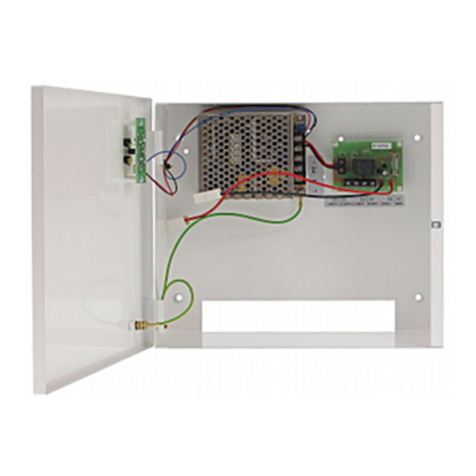
MPL
MPL ZBX-12V/2A user manual

Satel
Satel APS-30 manual
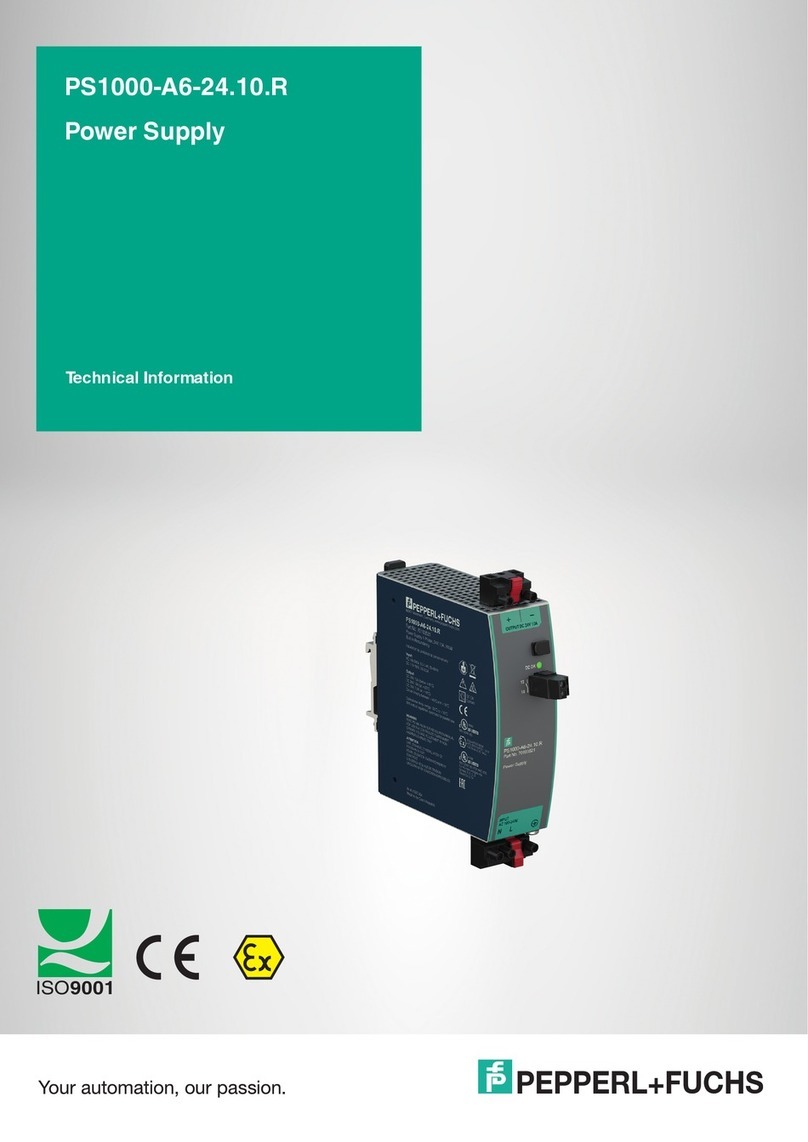
Pepperl+Fuchs
Pepperl+Fuchs PS1000-A6-24.10.R technical information
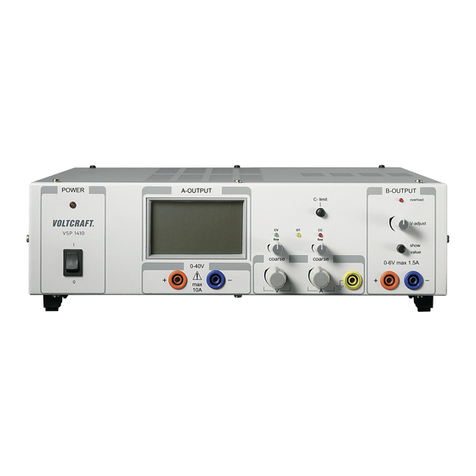
VOLTCRAFT
VOLTCRAFT VSP Series operating instructions
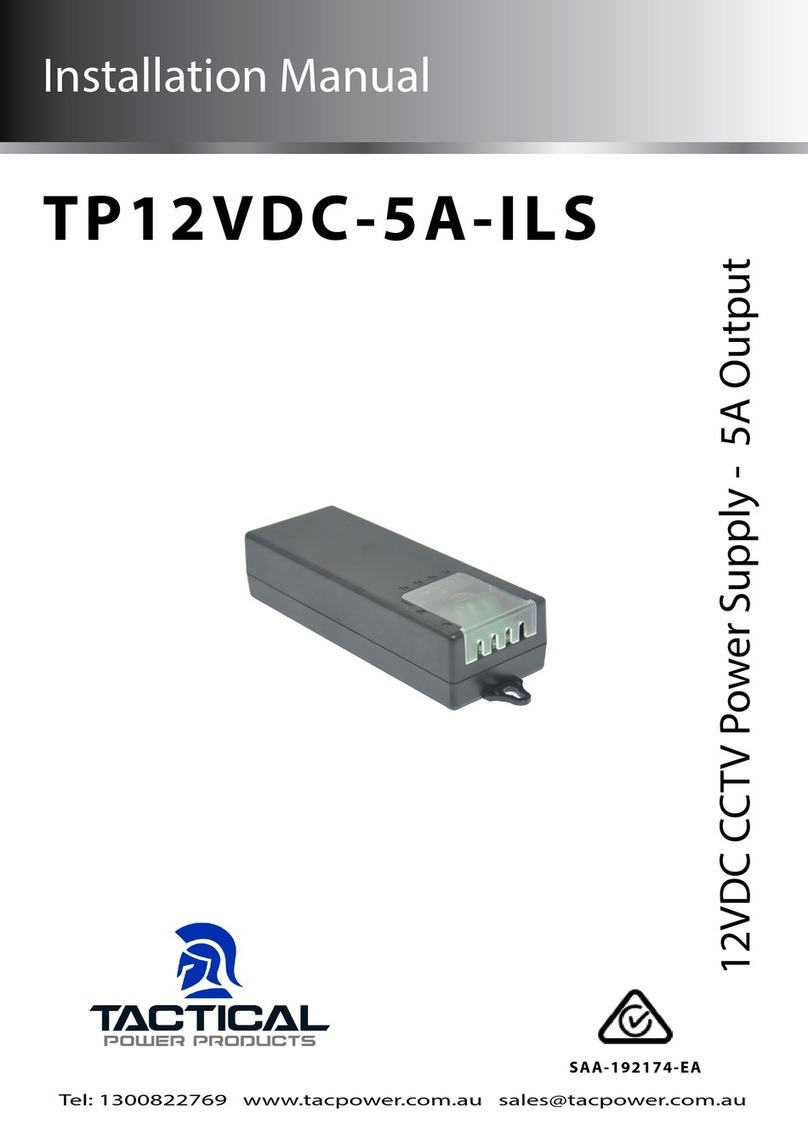
Tactical Power Products
Tactical Power Products TP12VDC-5A-ILS installation manual
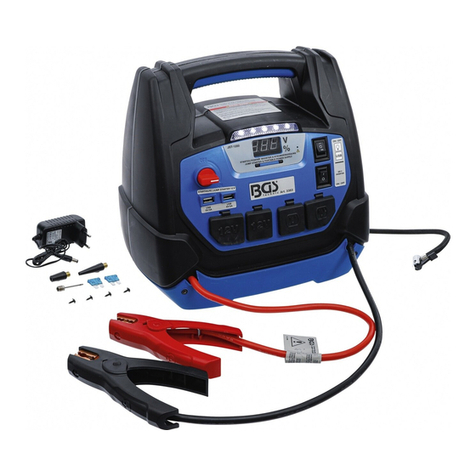
BGS technic
BGS technic 3383 Safety and operating instructions


